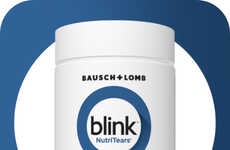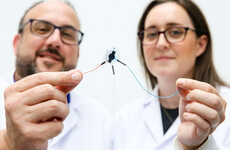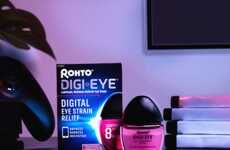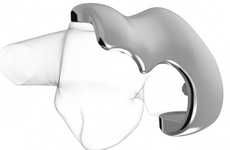
These Eye Implants Help Battle Dry Eye Caused By a Lack Of Tear Fluids
Rahul Kalvapalle — December 11, 2015 — Tech
References: iopscience.iop.org & gizmag
A group of scientists and researchers at Stanford University, led by professor Daniel Palanker and Michael Ackermann, have developed a high-tech eye implant that is designed to fight against dry eye syndrome. This syndrome, among the most common eye diseases in the world, is caused by a lack of sufficient tear fluids.
Dry eye syndrome can be extremely painful and can result in scars and ulcers. But this eye implant, which can be activated wirelessly, is designed to take care of that problem. When activated, the implant stimulates a gland in the eye that is responsible for producing tears.
This eye implant is currently in the midst of clinical trials, and could be available commercially within a year. It's ironic that this is an implant that actually helps people cry, but it does so in the most positive way possible.
Dry eye syndrome can be extremely painful and can result in scars and ulcers. But this eye implant, which can be activated wirelessly, is designed to take care of that problem. When activated, the implant stimulates a gland in the eye that is responsible for producing tears.
This eye implant is currently in the midst of clinical trials, and could be available commercially within a year. It's ironic that this is an implant that actually helps people cry, but it does so in the most positive way possible.
Trend Themes
1. Wireless Eye Implants - The development of high-tech eye implants that can be activated wirelessly presents a disruptive innovation opportunity in the healthcare industry for treating various eye conditions.
2. Treatment for Dry Eye Syndrome - The advancement in eye implants to stimulate tear production offers a disruptive innovation opportunity in the healthcare industry for addressing the common problem of dry eye syndrome.
3. Remote Activated Implants - The introduction of remote activated eye implants introduces a disruptive innovation opportunity in the healthcare sector for improved treatment options and patient convenience.
Industry Implications
1. Healthcare - The healthcare industry can benefit from the development of high-tech eye implants that address various eye conditions, offering new treatment options and improved patient outcomes.
2. Medical Device - The medical device industry stands to gain from the advancement in eye implants, providing innovative solutions for treating dry eye syndrome and other eye diseases.
3. Biotechnology - The biotechnology industry has an opportunity to leverage wireless eye implants as a disruptive innovation for the development of novel therapeutics and treatments related to ocular health.
1.5
Score
Popularity
Activity
Freshness























